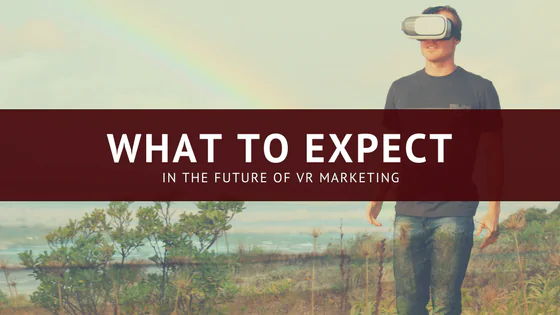The Future of VR Marketing
Virtual reality is a powerful technology that has the ability to alter behavior. While traditional marketing methods are aimed at persuading consumer behaviors, VR has already been used to increase charity donations, encourage altruistic behavior, and even fight racial prejudice.
The VR marketing experience is customer-centric—similar to marketing automation—in that it allows for highly-relevant interactions between consumers and businesses. Marketers are constantly discovering new ways to utilize VR in their strategies.
Experience Brands in Story Worlds
Brand and story are crucial for successful marketing. When consumers become invested in a brand, they are more likely to engage, share, and make purchases.
In the future of VR, many companies may choose to create story-worlds. These interactive, 3D videos will allow users to enjoy the ultimate brand experience without overdone product placement. The goal: increased brand awareness and brand loyalty.
See how it’s done with Jaguar UK and their “Feel Wimbledon” experience.
Chat Face-to-Face Virtually
Facebook and Oculus Rift have been putting resources into developing new VR applications. One of these, a VR chat room, will allow businesses and consumers to make calls and talk within a virtual space.
Staying in constant connection with consumers should already be a staple of your marketing strategy. Not only does VR chat give you that possibility of connection, it also allows for a personal touch through the use of avatars, facial gestures, movements, and more.
Get a glimpse of VR spaces in social media.
Test Products Without Leaving Home
Product testing, which is done to gauge feedback, is being transformed by VR. Where previously intangible products and services couldn’t be adequately sampled, consumers now have the chance to get a sneak-peek without ever leaving home.
Software, clothing trials, travel experiences, law consultations, and much more are taking advantage of the new tech to illustrate their offerings and connect on a deeper level.
Haystack, a research company, uses VR to test consumer reactions.
Be Charitable with the Company Mission
Much like with story-worlds, companies are utilizing the VR tech to communicate their mission through a visual medium. This practice of “show, don’t tell”, lends more empathy to audiences.
What’s the purpose of expanding a mission into a full-blown experience? Customers, who ultimately want to feel part of something, will gain an increased sense of brand loyalty and ultimately enjoy an improved purchase experience.
Toms Shoes allowed customers donate a pair of shoes across the world.
A Showroom in your Living Room
With new VR tech, there is a better probability of companies attaining improved sales. Why? There are simply more ways to reach and interact with consumers.
Take the virtual showroom, for one. Much like entering a store, consumers will be able to browse, manipulate virtual products, read information, and more. This improved shopping experience is overall more convenient for the customer.
Check out IKEA’s virtual showroom in action.
VR Technology and Your Marketing Strategy
The number of active VR users is expected to grow to 171 million in 2018, with the tech quickly taking over industries from medicine to marketing. Goldman Sachs has even predicted that virtual reality will grow to surpass TV within the next decade. What better time than now to start adapting your marketing strategy to remain current?
Ready to improve your strategy but don’t have the resources for a virtual showroom? Marketing automation may be your solution. You can automate website, email, and social media processes all without lifting a finger.
Contact mXtr Automation today for a free consultation.
Liked This? Then You’ll Love:





